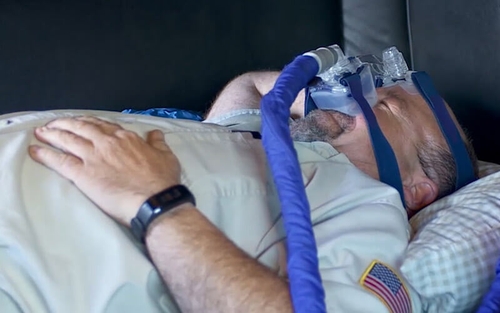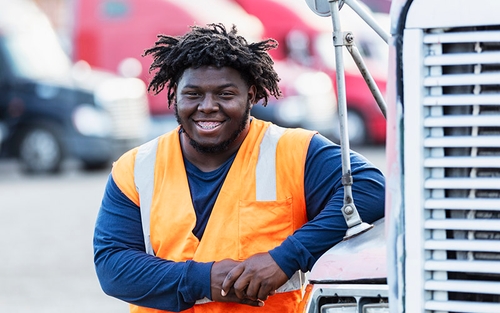What is commercial driving experience? Guide for new drivers


By The Schneider Guy
Estimated reading time: 3 minutes
When starting your truck driving career, one of the terms you'll frequently encounter is "commercial driving experience." But what is it?
Keep reading for answers to all questions related to commercial driving experience you may have.
Question 1: What is commercial driving experience?
When looking at jobs in the trucking industry, the term “commercial driving experience” typically refers to time spent operating a Commercial Motor Vehicle (CMV) in a professional capacity. The term is often used by trucking companies to assess a driver’s qualification for various driving roles.
Question 2: What is considered commercial driving?
Commercial driving mainly involves operating vehicles used for business purposes. These vehicles are typically larger and more complex than standard passenger vehicles and require specialized skills and knowledge to operate safely.
Commercial driving experience includes time driving Class 8 vehicles, like tractor-trailers, but also smaller vehicles, such as:
- Straight trucks.
- Large buses.
- Garbage trucks.
- Segmented buses.
- And many more.
Question 3: What is a commercial driver?
A commercial driver is a professional who operates a CMV. These drivers must possess a Commercial Driver's License (CDL) and are responsible for transporting goods or passengers.
Simply put, if you are driving a vehicle for business purposes and it meets certain criteria set by regulatory authorities, you are engaged in commercial driving.
Question 4: What is a commercial motor vehicle?
According to the Federal Motor Carrier Safety Administration (FMCSA), a CMV is defined as any motor vehicle used on a highway in interstate commerce to transport property or passengers when the vehicle:
Has a gross vehicle weight rating (GVWR) of 10,001 pounds or more.
- Is a single or combination of vehicles with a GVWR of 26,001 pounds or more.
- Is designed or used to transport more than eight passengers (including the driver) for compensation.
- Is designed or used to transport more than 15 passengers if not receiving compensation for the transportation.
- Is used to transport hazardous materials that require federal placarding.
Question 5: Why does commercial driving experience matter?
Commercial driving experience is one of the key requirements on truck driver job descriptions. Some driving jobs are only available to those with previous commercial driving experience, so it’s important to check before applying.
Often, job descriptions will also specify what type of experience is required for the job. For example, on a Schneider job description, you may see this stated as, “minimum three months of Class A driving experience.”
Question 6: How do you get commercial driving experience?
Getting commercial driving experience involves a few steps, including:
1. Decide what type of CDL you want.
Before you can gain commercial driving experience, you need to determine which type of CDL you need for the job you’re interested in. There are three classes of CDLs:
- Class A: Permits you to operate any combination of vehicles with a GVWR of 26,001 pounds or more. It also allows you to haul a trailer that weighs more than 10,000 pounds. This is the most versatile CDL and is typically required to drive a tractor-trailer.
- Class B: Permits you to operate a single vehicle with a GVWR of 26,001 pounds or more. It also allows you to haul a trailer that weighs less than 10,000 pounds. A Class B CDL is suitable for buses, delivery trucks and dump trucks.
- Class C: Permits you to operate vehicles not covered by Class A or B that are designed to transport 16 or more passengers or hazardous materials.
If you are interested in becoming a professional truck driver, you’ll need to choose between getting a Class A CDL or a Class B CDL.
2. Attend training.
Once you've decided on the type of CDL, you will have to attend a truck driving school or a community college. These programs usually last a few weeks, and include both classroom instruction and hands-on driving training.
The length of your training is one of the most important factors in how long it takes to get your CDL. Class A CDL training programs typically take the longest to complete, lasting around three to six weeks. However, Class B and C CDL programs usually take three weeks at most to complete, depending on the school and state.
3. Pass your exam.
After completing training, you'll need to pass the CDL exam. The exam consists of two parts, a written knowledge exam and a skills test.
4. Apply for inexperienced driving jobs.
With your CDL in hand, you can start gaining real-world commercial driving experience.
Wondering what life is like as a new truck driver?

Schneider Guy loves the "Big Orange." He's passionate about the trucking industry and connecting people to rewarding careers within it. He's been the eyes and ears of our company since our founding in 1935, and he's excited to interact with prospective and current Schneider associates through "A Slice of Orange."



